
How to Use Raspi Cam 3: Examples, Pinouts, and Specs
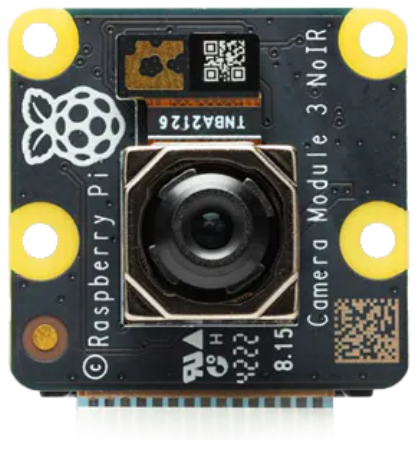
 Design with Raspi Cam 3 in Cirkit Designer
Design with Raspi Cam 3 in Cirkit DesignerIntroduction
The Raspi Cam 3 is a high-quality camera module designed specifically for use with Raspberry Pi boards. It features improved image resolution, enhanced low-light performance, and versatile functionality, making it an excellent choice for photography, video recording, and computer vision applications. With its compact design and robust capabilities, the Raspi Cam 3 is ideal for hobbyists, educators, and professionals alike.
Explore Projects Built with Raspi Cam 3
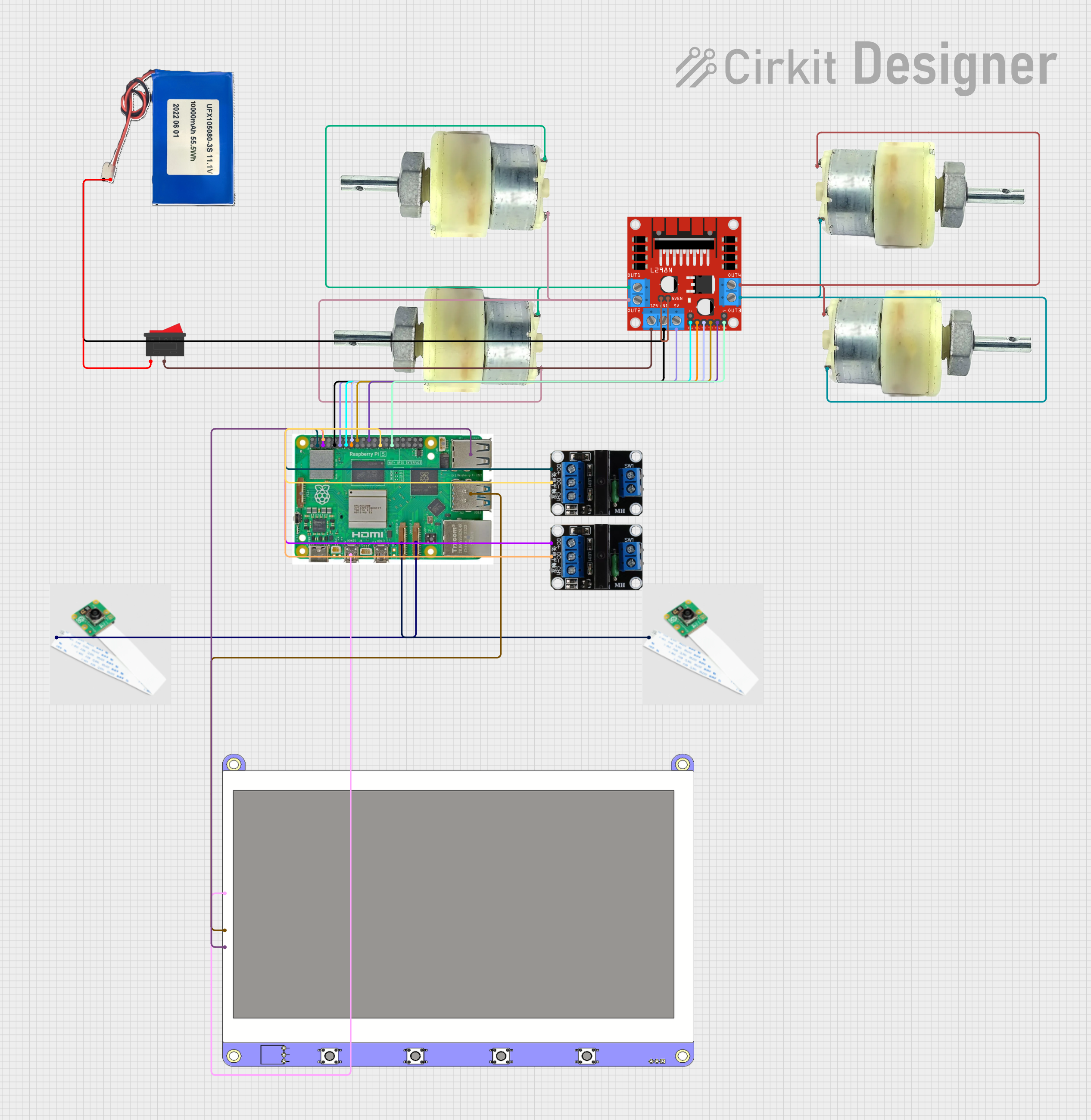
 Open Project in Cirkit Designer
Open Project in Cirkit Designer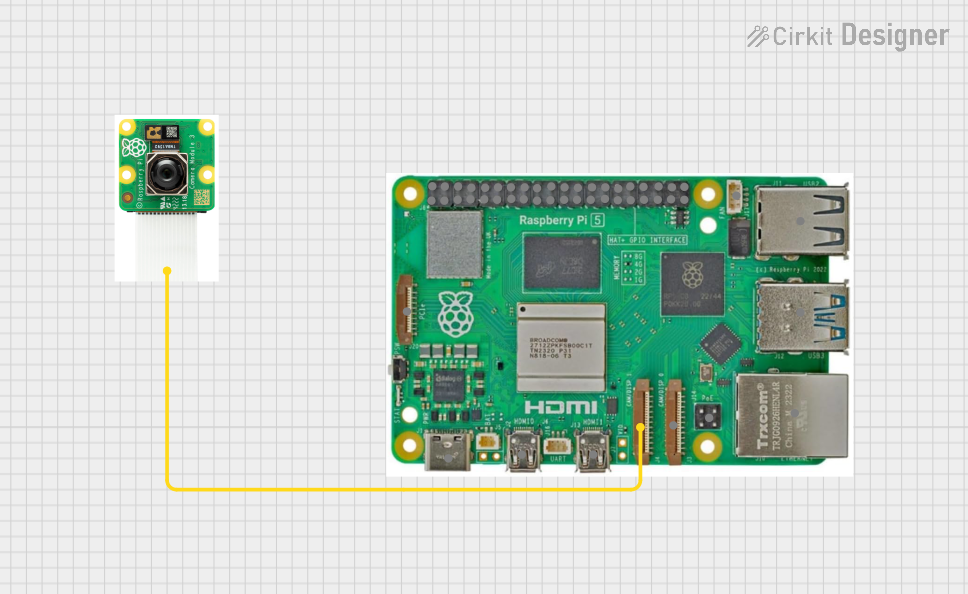
 Open Project in Cirkit Designer
Open Project in Cirkit Designer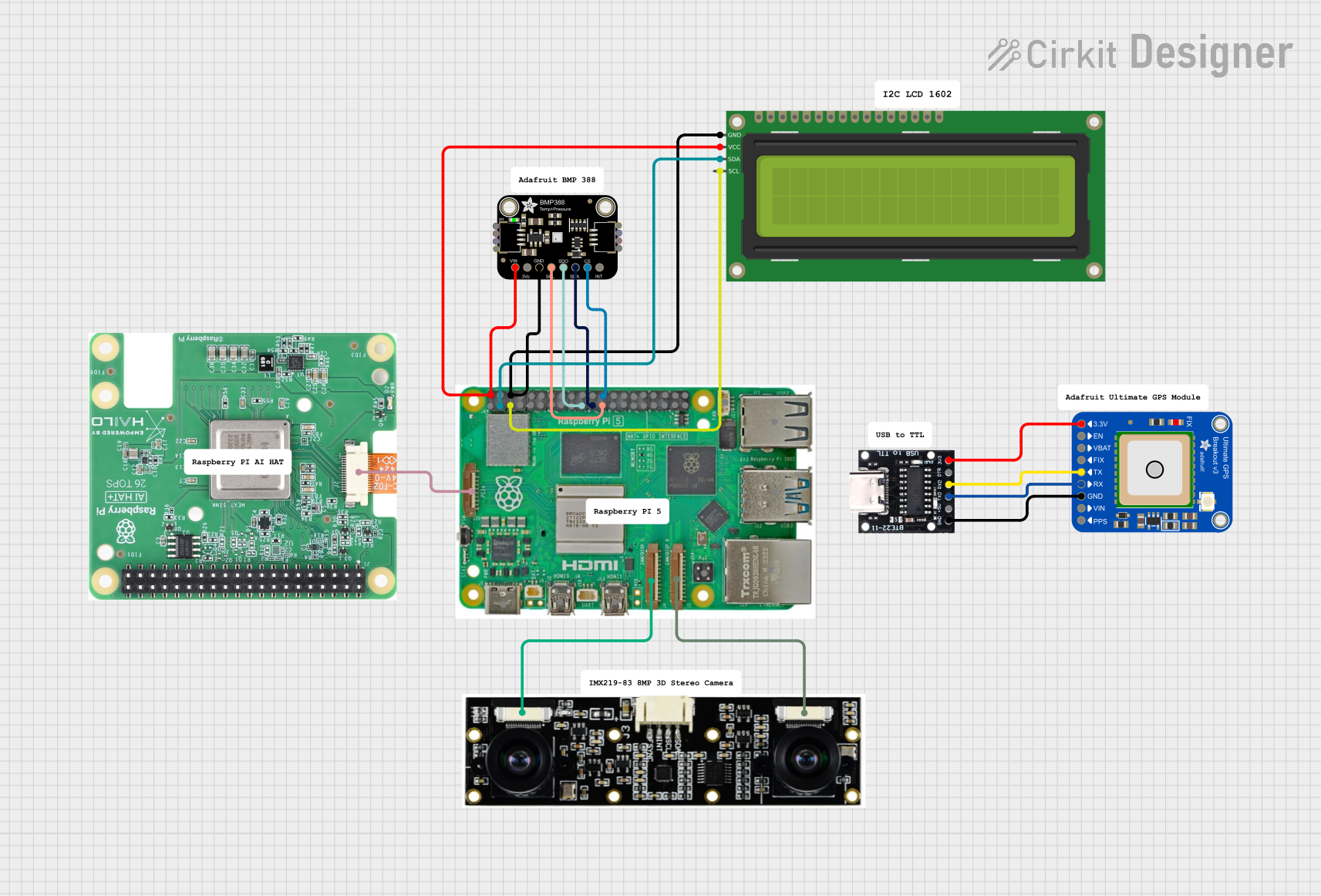
 Open Project in Cirkit Designer
Open Project in Cirkit Designer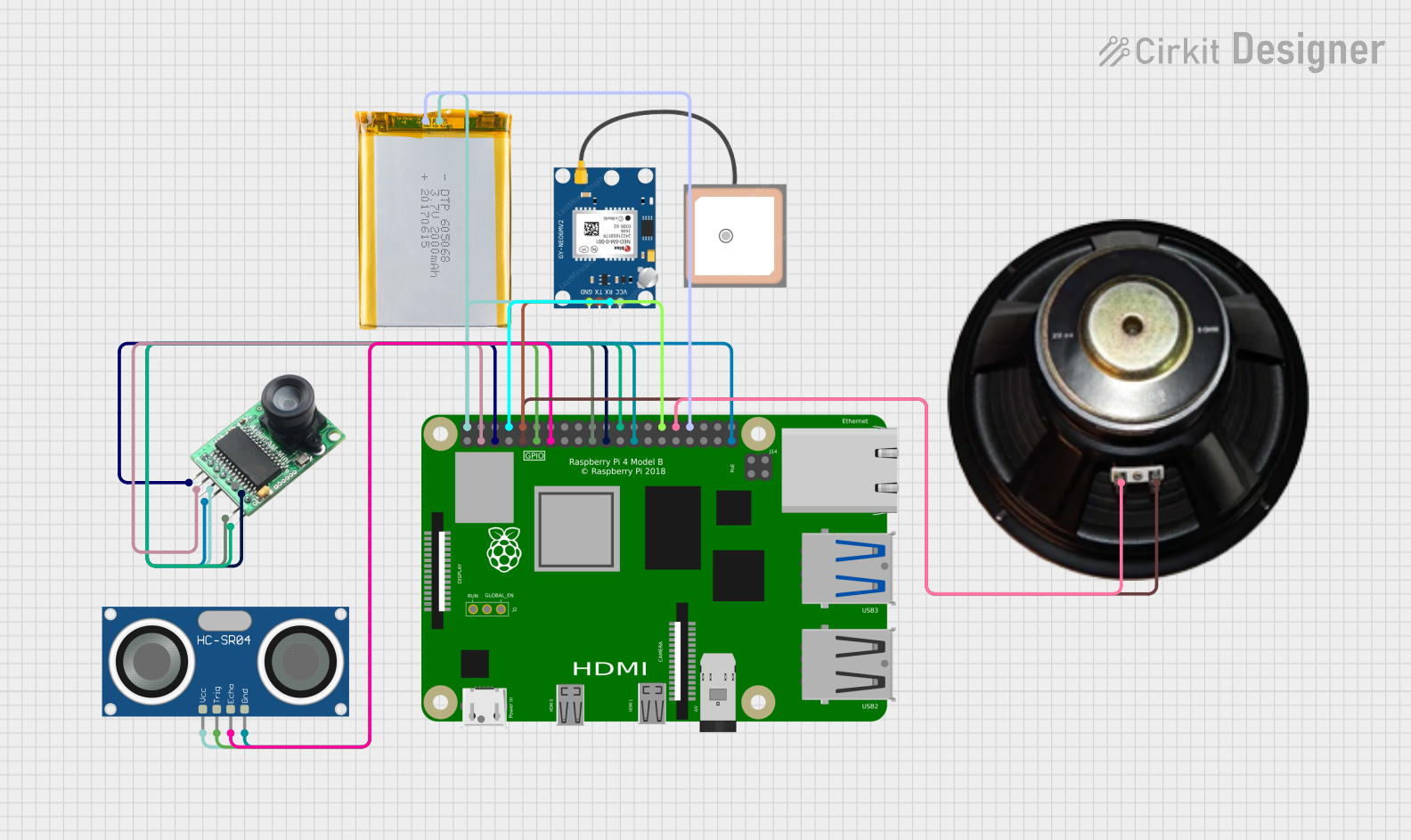
 Open Project in Cirkit Designer
Open Project in Cirkit DesignerExplore Projects Built with Raspi Cam 3

 Open Project in Cirkit Designer
Open Project in Cirkit Designer
 Open Project in Cirkit Designer
Open Project in Cirkit Designer
 Open Project in Cirkit Designer
Open Project in Cirkit Designer
 Open Project in Cirkit Designer
Open Project in Cirkit DesignerCommon Applications and Use Cases
- Photography and Videography: Capture high-resolution images and videos.
- Surveillance Systems: Use in security and monitoring setups.
- Computer Vision Projects: Ideal for object detection, facial recognition, and AI-based applications.
- Time-Lapse Photography: Create stunning time-lapse videos.
- Robotics: Integrate into robots for vision-based navigation and tasks.
Technical Specifications
The Raspi Cam 3 offers advanced features and specifications to meet a wide range of project requirements.
Key Technical Details
- Sensor: 12-megapixel Sony IMX708
- Resolution: Up to 4608 x 2592 pixels
- Video Modes:
- 1080p at 30/60 fps
- 720p at 120 fps
- Field of View (FoV): 120° (wide-angle lens option available)
- Shutter Type: Rolling shutter
- Interface: CSI-2 (Camera Serial Interface)
- Connector: 15-pin ribbon cable
- Power Supply: 3.3V (via Raspberry Pi)
- Dimensions: 25mm x 24mm x 9mm
- Weight: 3g
Pin Configuration and Descriptions
The Raspi Cam 3 connects to the Raspberry Pi via the CSI interface using a 15-pin ribbon cable. Below is the pin configuration for the CSI connector:
| Pin Number | Signal Name | Description |
|---|---|---|
| 1 | GND | Ground |
| 2 | 3.3V | Power supply (3.3V) |
| 3 | I2C SDA | I2C data line for camera control |
| 4 | I2C SCL | I2C clock line for camera control |
| 5 | GPIO0 | General-purpose input/output |
| 6 | GPIO1 | General-purpose input/output |
| 7 | MIPI D0+ | MIPI data lane 0 (positive) |
| 8 | MIPI D0- | MIPI data lane 0 (negative) |
| 9 | GND | Ground |
| 10 | MIPI CLK+ | MIPI clock lane (positive) |
| 11 | MIPI CLK- | MIPI clock lane (negative) |
| 12 | MIPI D1+ | MIPI data lane 1 (positive) |
| 13 | MIPI D1- | MIPI data lane 1 (negative) |
| 14 | GPIO2 | General-purpose input/output |
| 15 | GPIO3 | General-purpose input/output |
Usage Instructions
How to Use the Raspi Cam 3 in a Circuit
Connect the Camera:
- Power off your Raspberry Pi.
- Locate the CSI connector on the Raspberry Pi board.
- Gently lift the plastic clip on the CSI connector.
- Insert the 15-pin ribbon cable from the Raspi Cam 3 into the connector, ensuring the metal contacts face the Raspberry Pi's PCB.
- Secure the cable by pressing the plastic clip back down.
Enable the Camera Interface:
- Boot up your Raspberry Pi.
- Open a terminal and run the following command to access the Raspberry Pi configuration tool:
sudo raspi-config - Navigate to Interface Options > Camera and enable the camera interface.
- Reboot the Raspberry Pi to apply the changes.
Capture Images and Videos:
- Install the
libcameratools if not already installed:sudo apt update sudo apt install libcamera-apps - To capture an image:
libcamera-still -o image.jpg - To record a video:
libcamera-vid -o video.h264
- Install the
Important Considerations and Best Practices
- Ensure the ribbon cable is securely connected to avoid communication issues.
- Avoid touching the camera lens to prevent smudges or scratches.
- Use a stable power supply to prevent unexpected shutdowns or malfunctions.
- For low-light environments, consider using an external IR illuminator or adjusting the camera's exposure settings.
- When using the camera for extended periods, ensure proper ventilation to prevent overheating.
Example: Using Raspi Cam 3 with Arduino UNO
The Raspi Cam 3 is designed for Raspberry Pi and does not natively interface with Arduino boards. However, you can use an intermediary device, such as a Raspberry Pi, to process the camera data and communicate with the Arduino via serial or I2C.
Troubleshooting and FAQs
Common Issues and Solutions
Camera Not Detected:
- Ensure the ribbon cable is properly connected to the CSI port.
- Verify that the camera interface is enabled in the Raspberry Pi configuration.
- Check for software updates and install the latest version of
libcamera.
Poor Image Quality:
- Clean the camera lens with a microfiber cloth.
- Adjust the camera's focus if using a model with a manual focus lens.
- Experiment with different lighting conditions or use external lighting.
Video Recording Fails:
- Ensure sufficient storage space is available on the Raspberry Pi.
- Use a high-speed microSD card to avoid write speed bottlenecks.
Camera Overheating:
- Ensure proper ventilation around the Raspberry Pi and camera module.
- Avoid using the camera in high-temperature environments for extended periods.
FAQs
Q: Can the Raspi Cam 3 be used with older Raspberry Pi models?
A: Yes, the Raspi Cam 3 is compatible with most Raspberry Pi models that feature a CSI connector. However, performance may vary depending on the Raspberry Pi's processing power.
Q: Does the Raspi Cam 3 support autofocus?
A: Yes, the Raspi Cam 3 features autofocus capabilities for sharper images and videos.
Q: Can I use the Raspi Cam 3 for night vision?
A: The Raspi Cam 3 has improved low-light performance, but for true night vision, consider using an IR-sensitive version of the camera along with an IR illuminator.
Q: How do I update the camera firmware?
A: Firmware updates are typically included in Raspberry Pi OS updates. Run the following commands to update your system:
sudo apt update
sudo apt full-upgrade
By following this documentation, you can effectively integrate and utilize the Raspi Cam 3 in your projects.